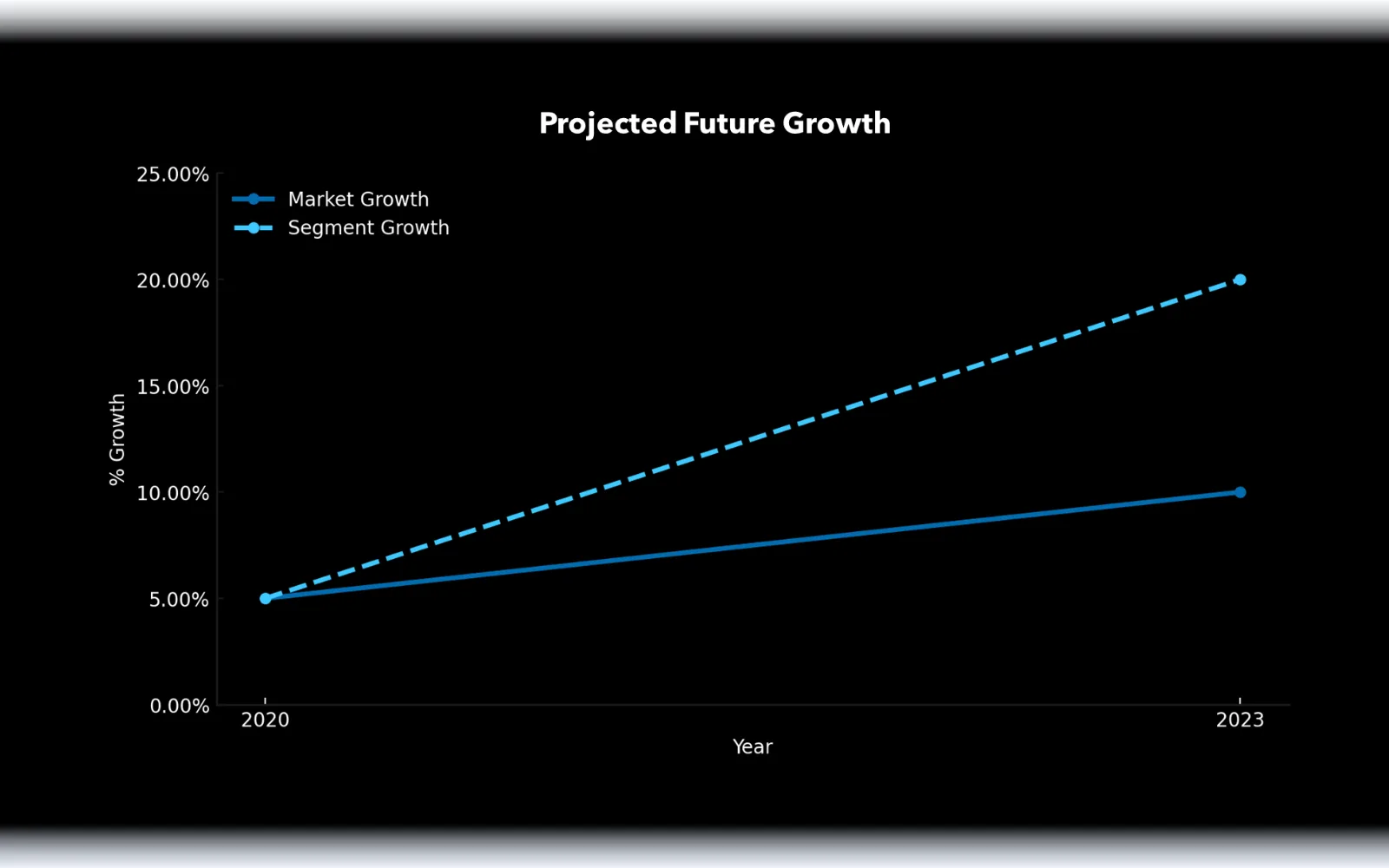Growth strategy case study
Insurance provider exceeds growth projections by 61% with strategic market expansion
The challenge
What’s the secret to conquering an untapped market?
Sustainable revenue growth relies on successful market expansions, yet many enterprises struggle to answer key questions like ‘Who is the customer?’ and ‘How do we deliver value efficiently?’ In the health insurance market, strict regulations and regional monopolies make it even more challenging for smaller players. A leading national insurer sought to capitalize on the success of a rapidly growing product and expand into an untapped market. Despite strong growth and margins, they lacked insights into the space and its consumers, making it difficult to establish themselves as a top competitor.
The objective
Strategize market penetration to expand footprint
The insurance provider partnered with Marketbridge to assess the market landscape and plan their expansion. They aimed to grow their market share and increase their footprint by over 50%. First, they needed a clear understanding of their current and potential market, along with a better sense of product-market fit. Then, they focused on refining targeting, messaging, and consumer outreach to effectively engage the new audience.
The solution
A targeted strategy for customer expansion
Step 1: Market sizing
Marketbridge started with a comprehensive market sizing analysis, evaluating growth projections, segment opportunities, and the client’s planned expansion into new states. The findings revealed the potential for the client’s market footprint to double, with the possibility of acquiring over one million new customers in the coming years. With this significant growth opportunity, it was critical for the client to act decisively and efficiently to capture market share.

Step 2: Customer segmentation
We then conducted both qualitative and quantitative surveys of prospective customers to refine segmentation strategies. By analyzing key metrics like age, marital status, income, and medical history, we identified two primary customer segments. We then further sub-segmented these into five smaller groups, allowing for more targeted and prioritized outreach.
Step 3: Prospect identification
Leveraging public health data, we developed a targeting model using logistic regression to assess the likelihood that a profile in the client’s database represented a potential customer. This model allowed the client to efficiently target prospects with direct mail and other materials for new offerings, successfully identifying 70% of potential customers. We also trained the client on using this model, helping them better allocate resources and focus on high-probability leads, ultimately improving both marketing and sales efficiency.
Step 4: Go-to-market playbook design
With enhanced targeting and segmentation in place, we reviewed the client’s existing sales plays and identified opportunities to optimize agent and broker approaches. Tailored marketing tactics were developed for each stage of the customer acquisition journey, with a focus on educating prospective buyers. Sales and broker tools were also created to guide customers through the process, ensuring they had the right information to drive product purchases. We evaluated the potential impact and ease of implementation for each tactic, prioritizing high-impact actions and low-difficulty solutions for quick wins.
Business impact
Unprecedented market growth
Increased market share-of-voice
Agents were better equipped to guide prospective customers from discovery to purchase. Increased online information and support from primary care providers boosted brand awareness and positioned new offerings across the covered territory.
Improved campaign performance
The new playbook improved the buyer experience and campaign touchpoints. Direct mail and email were more effective, broker support and online resources increased demand, and flexible purchase options and post-purchase support fostered loyalty.
Exceeded growth projections by 61%
With segmentation, targeting systems, and a new sales playbook, the client exceeded acquisition goals. Existing markets saw over 100% growth from 2021 to 2022, and total customer base grew 61%, tripling by January 2022. By July 2022, growth continued with an additional 30%.